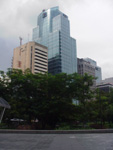 Originally designed to only produce clean electricity, the Northwind Bangui Wind Farm, otherwise known as the Ilocos wind mills, has also become a famous tourist attraction on its own in Ilocos Norte province. Some people call them giant electric fans, which are visible from the highway leading to the beach resort of Pagudpud.
Originally designed to only produce clean electricity, the Northwind Bangui Wind Farm, otherwise known as the Ilocos wind mills, has also become a famous tourist attraction on its own in Ilocos Norte province. Some people call them giant electric fans, which are visible from the highway leading to the beach resort of Pagudpud.
With the addition of the Bangui wind mills in Bangui to its growing list of tourist attractions, Ilocos Norte has become a major tourist destination in Luzon, thanks to its white-sand beaches in Pagudpud, the beautiful Baroque churches including the Paoay Church, the hotel complex at Fort Ilocandia, the houses and other facilities owned by the late President Ferdinand Marcos in Batac, the Sand Dunes in Laoag, the Kapurpurawan white rock formation and Cape Bojeador Lighthouse in Burgos.

 Originally designed to only produce clean electricity, the Northwind Bangui Wind Farm, otherwise known as the Ilocos wind mills, has also become a famous tourist attraction on its own in Ilocos Norte province. Some people call them giant electric fans, which are visible from the highway leading to the beach resort of Pagudpud.
Originally designed to only produce clean electricity, the Northwind Bangui Wind Farm, otherwise known as the Ilocos wind mills, has also become a famous tourist attraction on its own in Ilocos Norte province. Some people call them giant electric fans, which are visible from the highway leading to the beach resort of Pagudpud.
